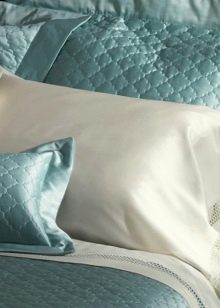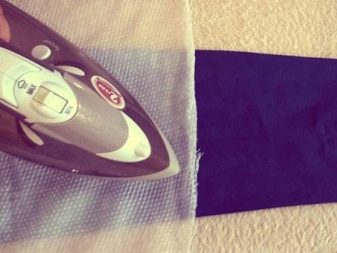How to iron polyester garments?

The use of synthetic fibers in the manufacture of fabrics is widespread, and the most common material used in weaving is polyester.



Material properties
Polyester is a part of many fabrics and gives them a lot of advantages. The advantages of synthetic material include low cost, resistance to deformation during washing and color fastness. In addition, polyester products are not prone to abrasion, do not fade or shrink, wash well from dirt and dry quite quickly.
The fabric is lightweight, uninteresting to moths and has reduced crease.
The disadvantages of the material include poor ventilation and low hygroscopicity., which is due to the rough structure of the fibers of synthetic fabrics. Polyester is actively used for sewing bedding, curtains, bedspreads, windbreakers, dresses, blouses and outerwear.



Despite the low crease of the material, you still have to iron things made of polyester. In general, synthetic fabrics are very demanding on temperature conditions, and polyester is no exception. This causes certain difficulties during ironing and forces you to be more careful in choosing the temperature. However, in some cases, the ironing procedure can be avoided altogether. We are talking about the correct washing and subsequent drying of products, the competent implementation of which will allow you not to touch the iron.
To wash a polyester product according to all the rules, you must not use water with a temperature higher than 40 degrees, do not add bleaches and soak only with light-colored items.
Machine wash should be done in a delicate cycle, and it is recommended to spin the clothes at a reduced speed.



Instead of powder, it is preferable to use liquid products. This will eliminate the likelihood of the appearance of an ugly coating, which can turn yellow during ironing. When machine washing large items such as jackets, coats or down jackets, we recommend placing them one by one in the drum. Otherwise, the products will fill the entire working volume of the machine, do not stretch and will be very wrinkled.
All outer clothing should be turned inside out and placed in protective bags. If the jacket has heavy dirt on the sleeves and collars, it is recommended to wash the stains with a brush before placing them in the drum.


And also it should be borne in mind that polyester products are highly electrified. Therefore, it is recommended to add a small amount of antistatic agent to the water during rinsing.
After the clothes are washed, they are removed from the machine, blotted with a dry towel, shaken and hung on a hanger. Polyester skirts should be dried by hanging from the waistband, and jackets and coats should be hung buttoned up. It is recommended to dry the products away from heating devices, periodically straightening folds and creases with your hands.
If it becomes obvious that some places will not be able to straighten out, then you should not wait for complete drying. In this case, it is necessary to smooth out the dented area with damp hands and send it under the iron.


Ironing rules
Read the information on the label before ironing polyester items. Usually it indicates the recommended ironing temperature, which in no case should be neglected. Otherwise, you can easily burn through the fabric, damaging not only the product, but also the sole of the iron. The ironing mode is indicated on the tags in the form of an iron with dots located on it.
A polyester garment label usually has one dot, indicating that the maximum allowed temperature should not exceed 110 degrees. Many factory-made models have a small test patch on the seamy side to test the temperature of the iron.
If there is no flap, then smoothing should be started from the inconspicuous areas of the products located on the seamy side.

In general, it is recommended to iron polyester garments from the wrong side using damp gauze or dry paper sheet. The lack of direct contact between the soleplate and the synthetic material helps prevent thermal deformation of the polyester garment. If the item is very wrinkled, you can slightly increase the temperature by setting the switch between one and two points. After the iron heats up and the indicator light turns off, place a damp cotton cloth on top of the dented area and gently attach the iron to it.
If the crease or crease does not disappear, it is recommended to wet the product in lukewarm water. and without squeezing hang on a hanger or clothesline. When the thing dries up a little, you need to inspect it again for problem areas. If they still remain, you need to cover the product with damp gauze and repeat the smoothing. Then hang the model on a rope or hanger, let it hang down and dry completely. This usually takes no more than 2-3 hours, after which the item can be put on or stored in the closet.


Steaming
If your iron has a vertical steaming function or you have a steam generator in your home, crumpled polyester items can be steamed. To do this, you need to hang the item on a hanger and carefully level it. If a raincoat, coat, windbreaker or jacket is to be steamed, then they should be fastened with all buttons, and then the lining and pockets should be straightened.Then the device will need to be set to the delicate steaming mode and start processing the product, moving from top to bottom.
First of all, the front and back parts of the product are usually steamed, after which they move on to the sleeves. Steaming should be done very carefully, keeping the device at a distance of 3-5 cm from the surface of the fabric.
Using this method, you can not only smooth the caked product, but also revive the colors, as well as save it from unpleasant odors and moderate contamination.

In the absence of special steamers, you can use a fairly effective folk method. Its essence boils down to the following: in a bathroom or other small and warm room, a basin or a tank of boiling water is installed, or it is simply poured into a bath. Then, over the hovering container, they hang things on hangers and leave them until the boiling water stops steaming and the products are moistened. In the process of active vaporization, it will be necessary to straighten and smooth out problem areas by wetting your hands in warm water before that.
The key to success is a tightly closed door to the room and a sufficient amount of steam. If the procedure is carried out in the bathroom, then you can simply open the hot tap, wait until boiling water starts to flow from it, and leave the water open for 15–20 minutes. Usually this time is enough for the material to be completely moistened and finally straightened out. Then the clothes will need to be transferred to a dry place and left there for a while to dry.


Strict adherence to the rules for handling polyester, as well as competent and regular care, will allow you to preserve the original look of your favorite thing for a long time and significantly extend its life.
For information on how synthetic clothing affects the body, see the next video.








